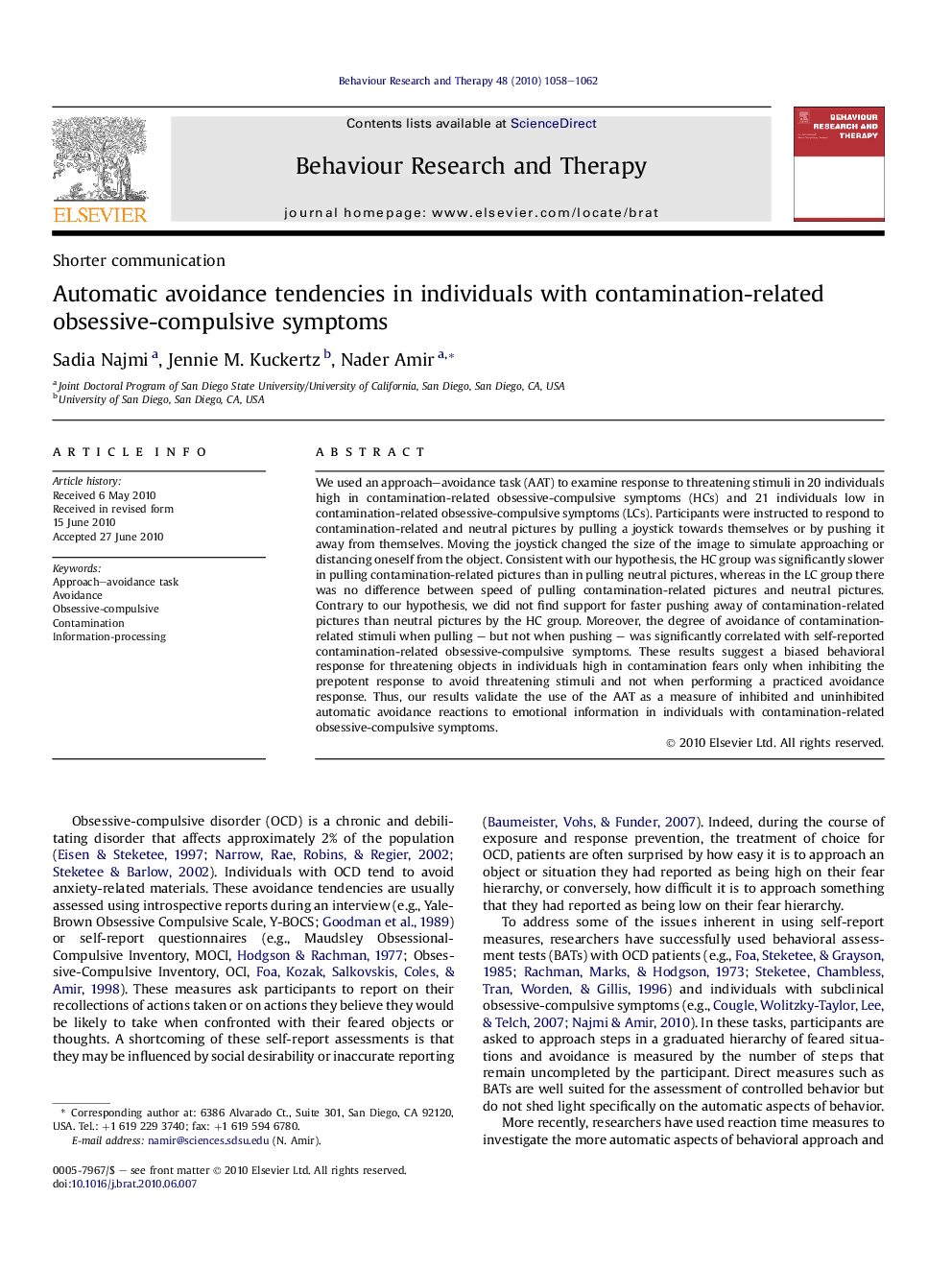| Article ID | Journal | Published Year | Pages | File Type |
|---|---|---|---|---|
| 10444663 | Behaviour Research and Therapy | 2010 | 5 Pages |
Abstract
We used an approach-avoidance task (AAT) to examine response to threatening stimuli in 20 individuals high in contamination-related obsessive-compulsive symptoms (HCs) and 21 individuals low in contamination-related obsessive-compulsive symptoms (LCs). Participants were instructed to respond to contamination-related and neutral pictures by pulling a joystick towards themselves or by pushing it away from themselves. Moving the joystick changed the size of the image to simulate approaching or distancing oneself from the object. Consistent with our hypothesis, the HC group was significantly slower in pulling contamination-related pictures than in pulling neutral pictures, whereas in the LC group there was no difference between speed of pulling contamination-related pictures and neutral pictures. Contrary to our hypothesis, we did not find support for faster pushing away of contamination-related pictures than neutral pictures by the HC group. Moreover, the degree of avoidance of contamination-related stimuli when pulling - but not when pushing - was significantly correlated with self-reported contamination-related obsessive-compulsive symptoms. These results suggest a biased behavioral response for threatening objects in individuals high in contamination fears only when inhibiting the prepotent response to avoid threatening stimuli and not when performing a practiced avoidance response. Thus, our results validate the use of the AAT as a measure of inhibited and uninhibited automatic avoidance reactions to emotional information in individuals with contamination-related obsessive-compulsive symptoms.
Related Topics
Health Sciences
Medicine and Dentistry
Psychiatry and Mental Health
Authors
Sadia Najmi, Jennie M. Kuckertz, Nader Amir,
